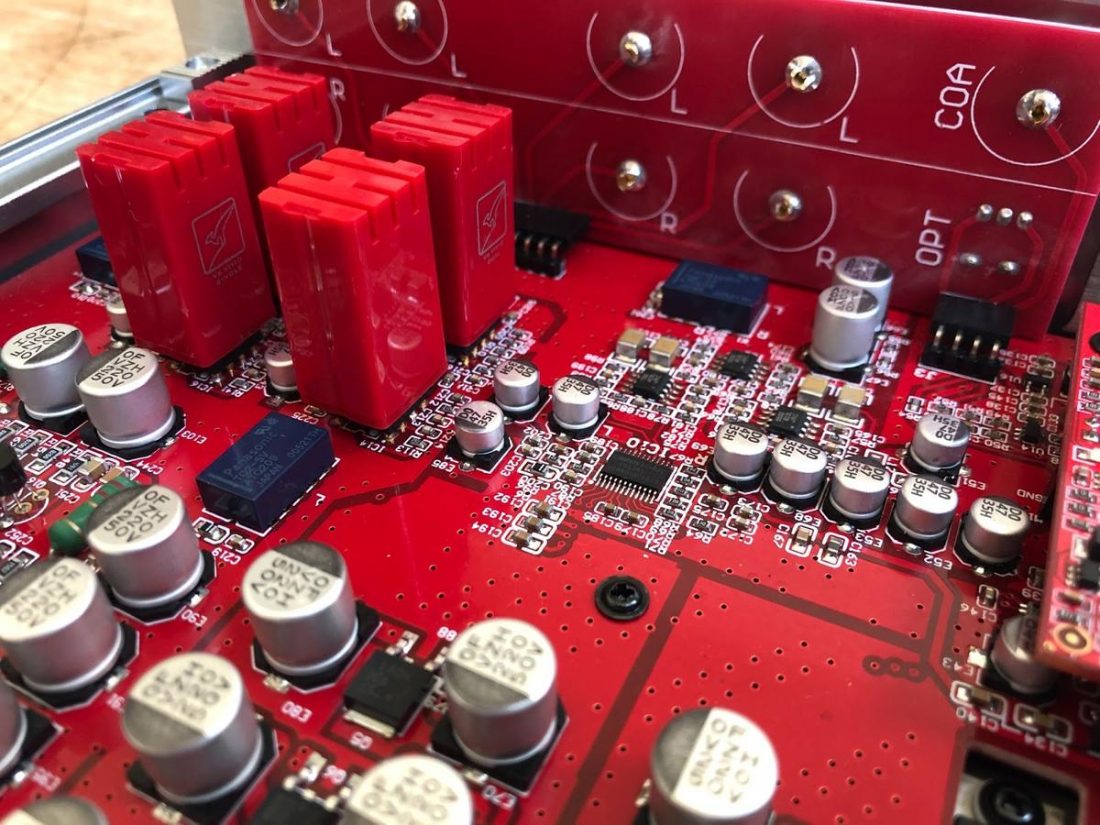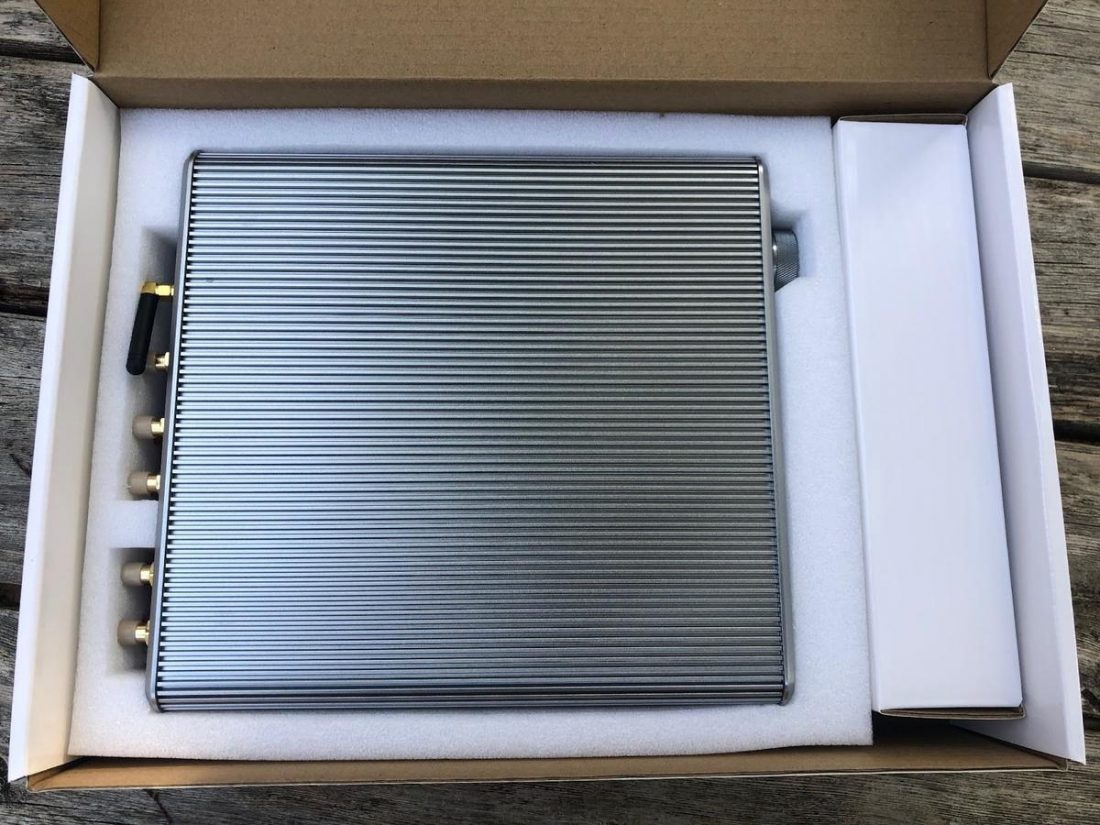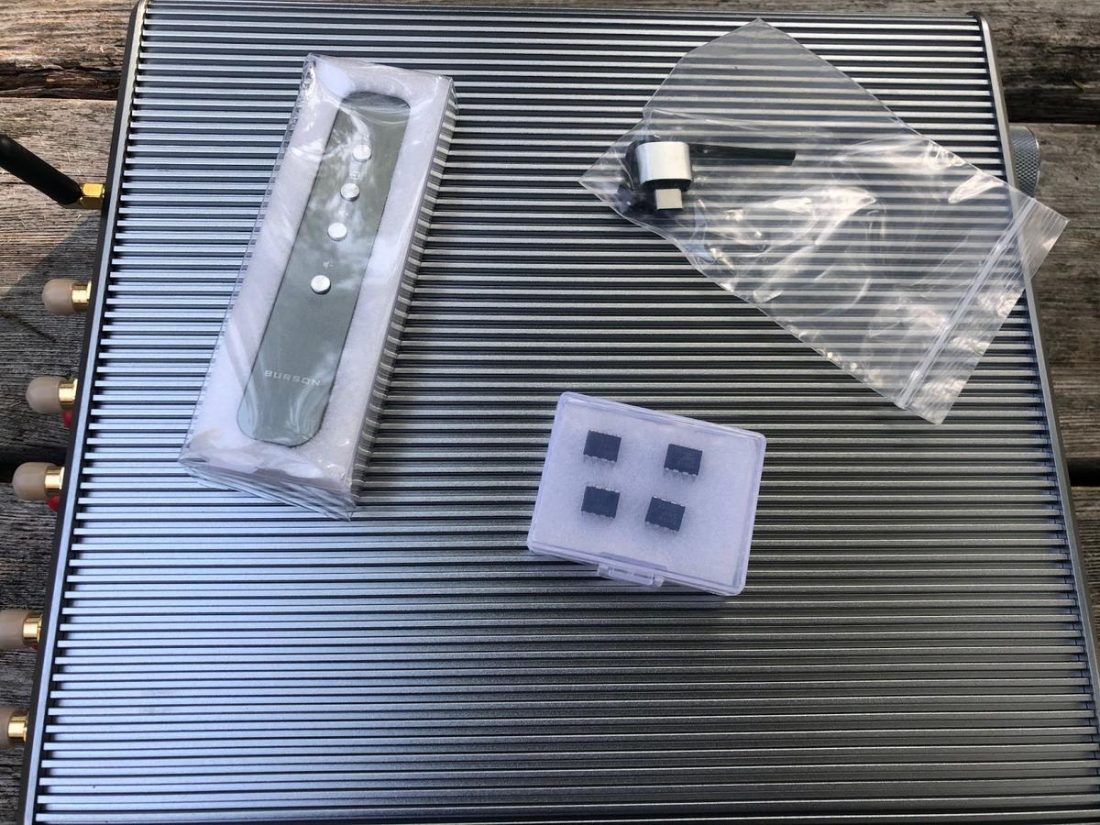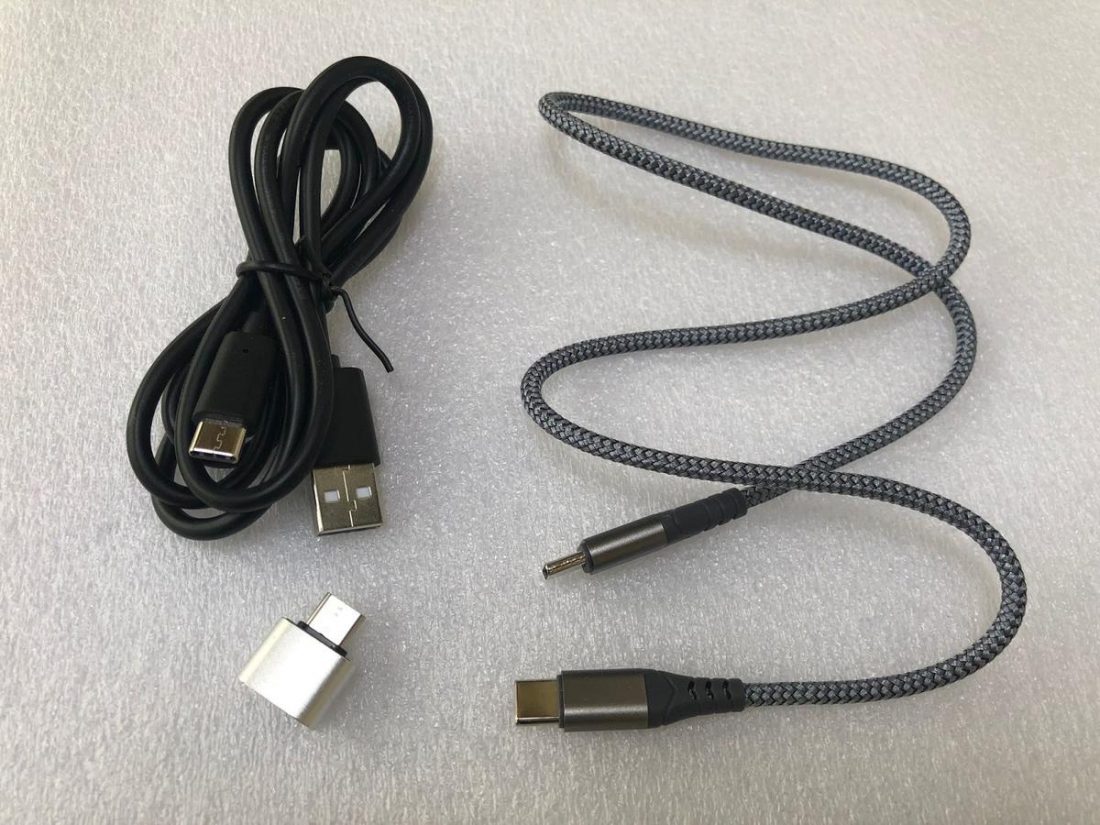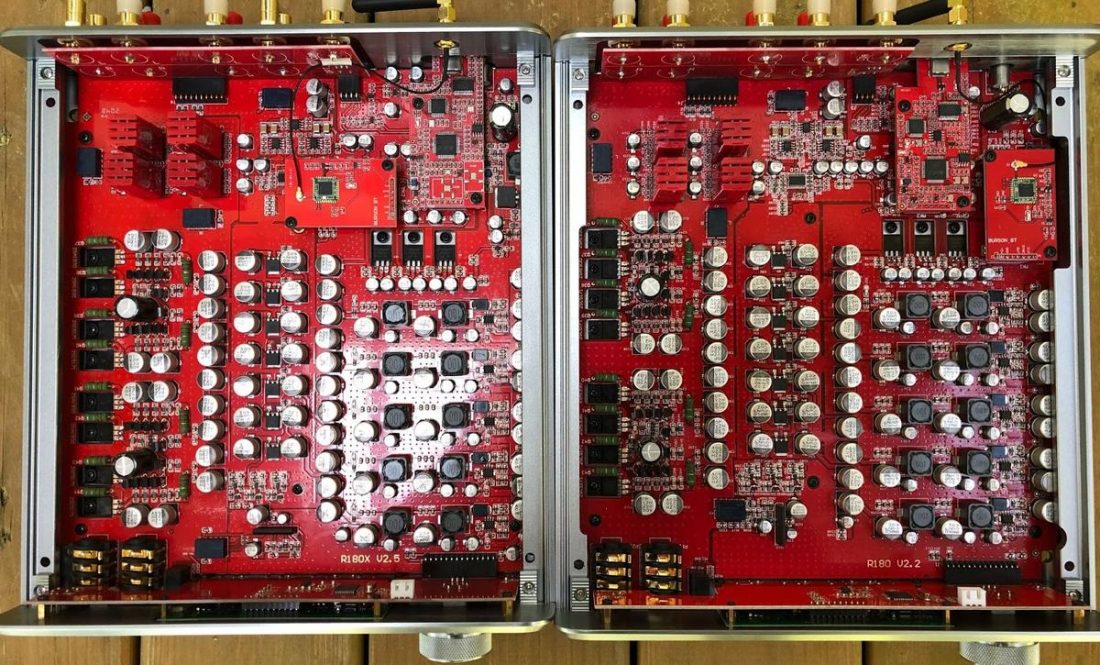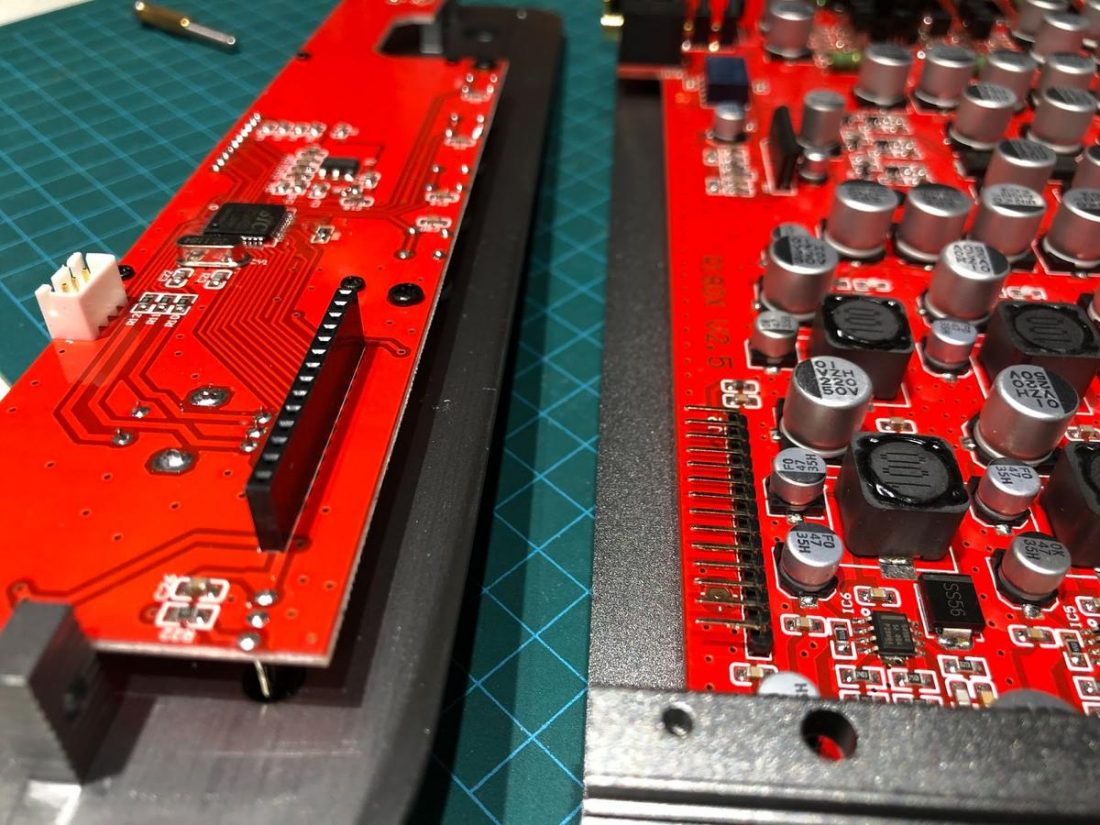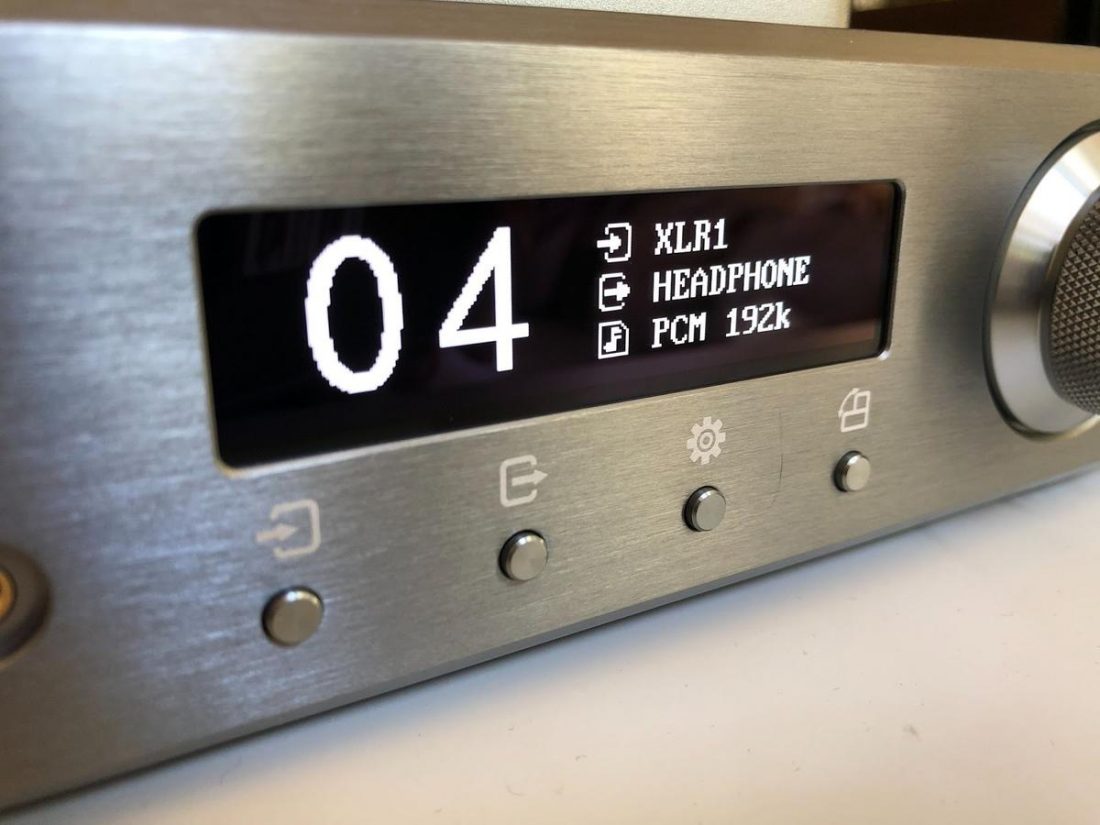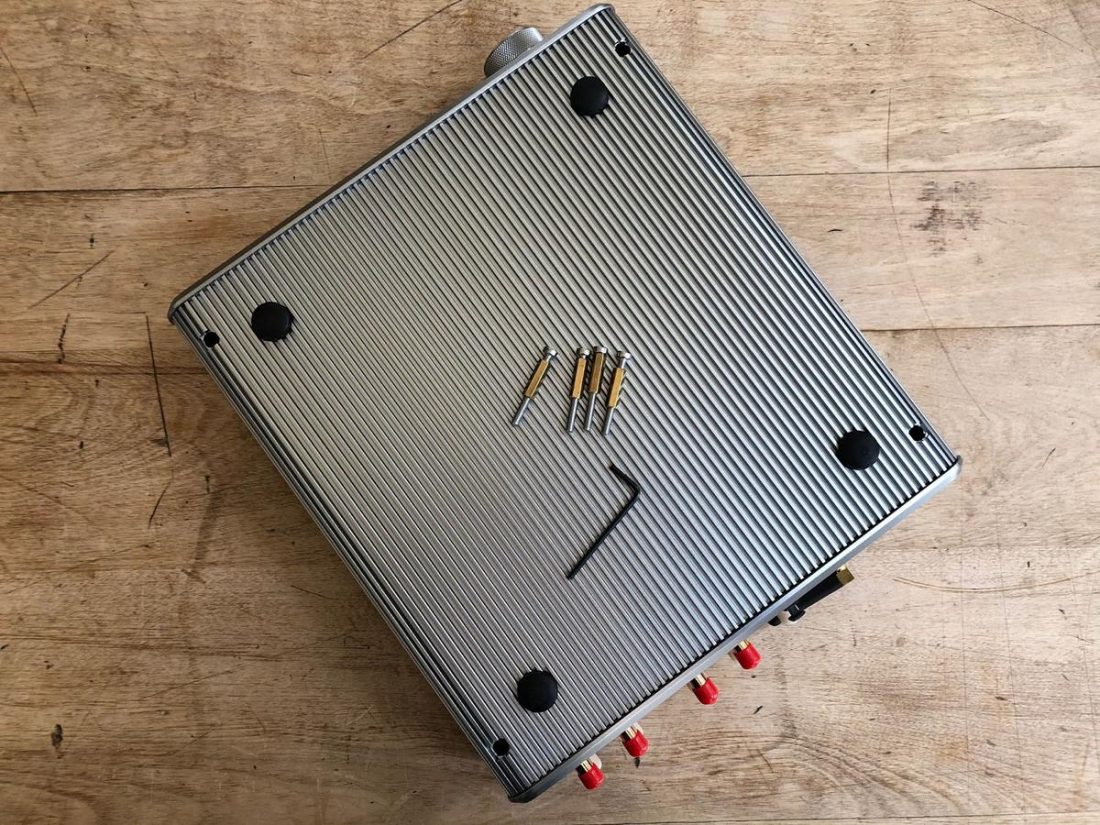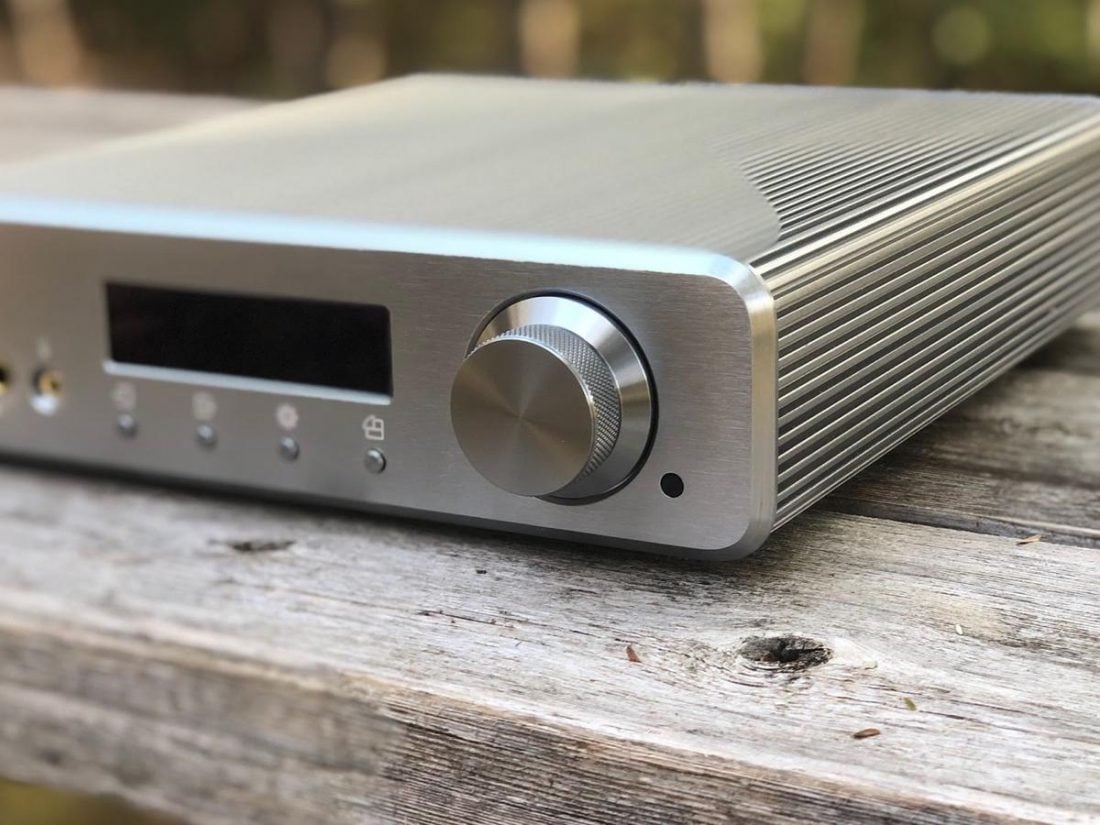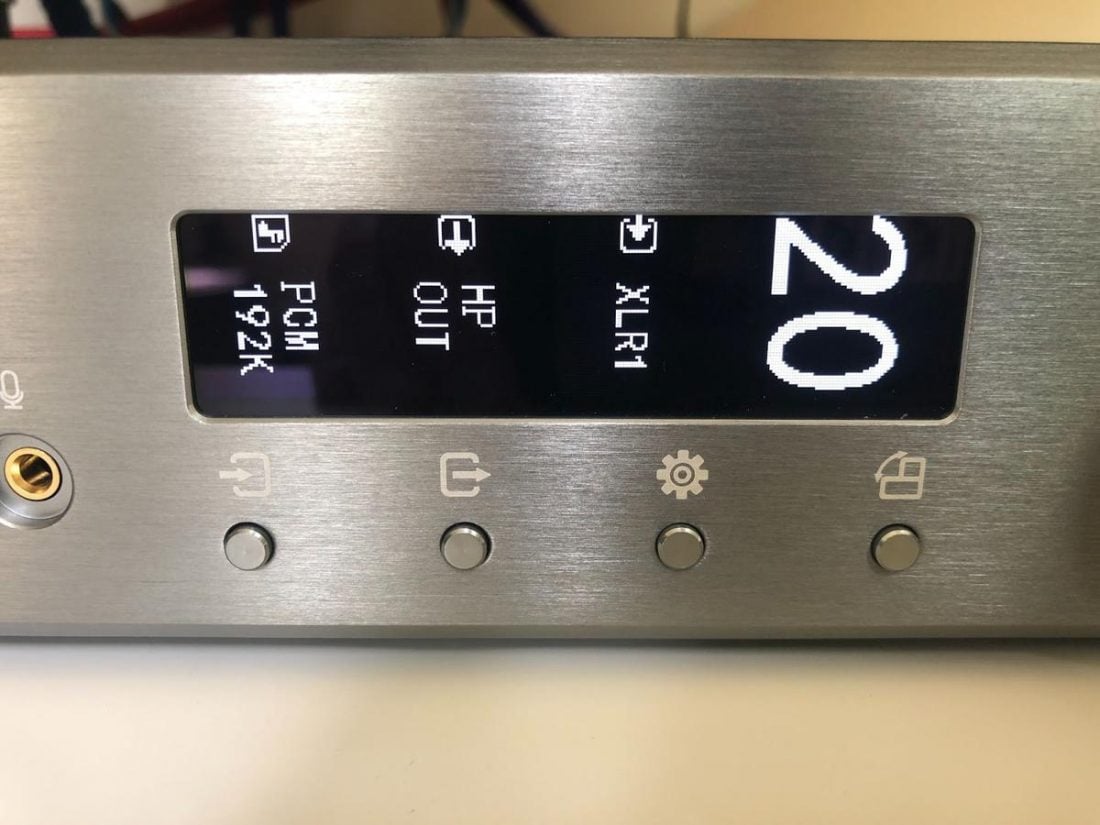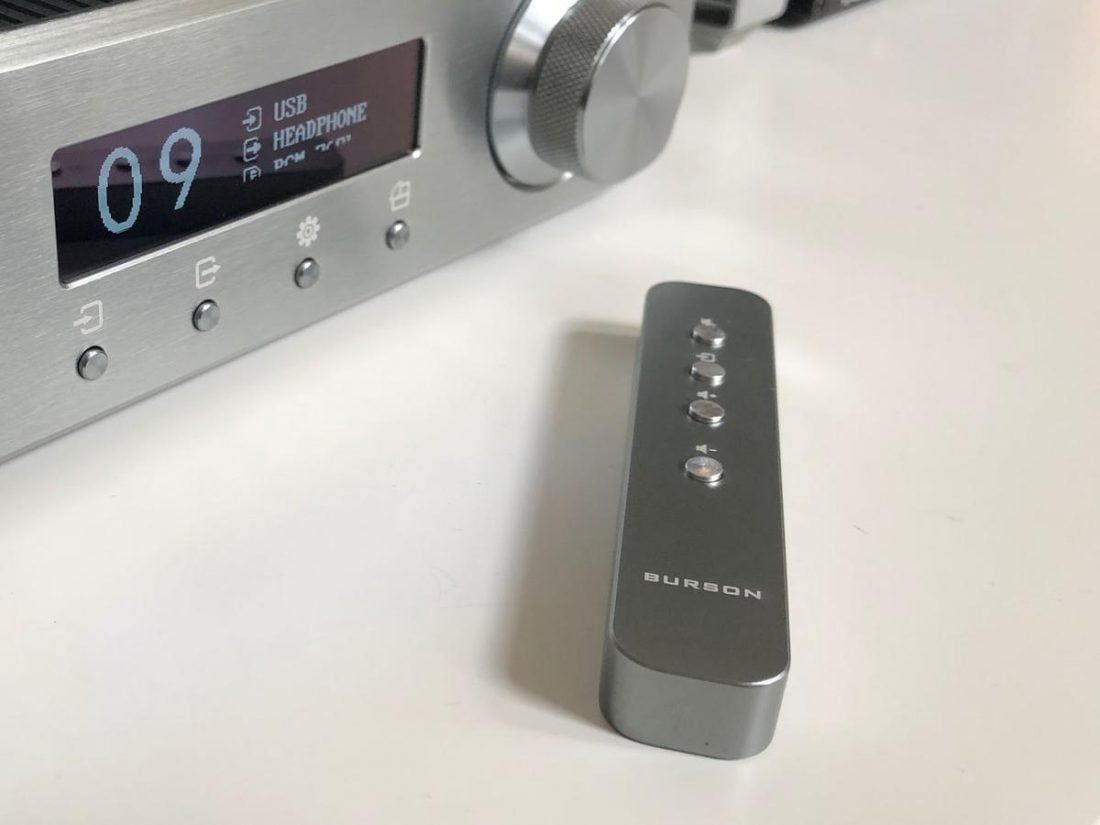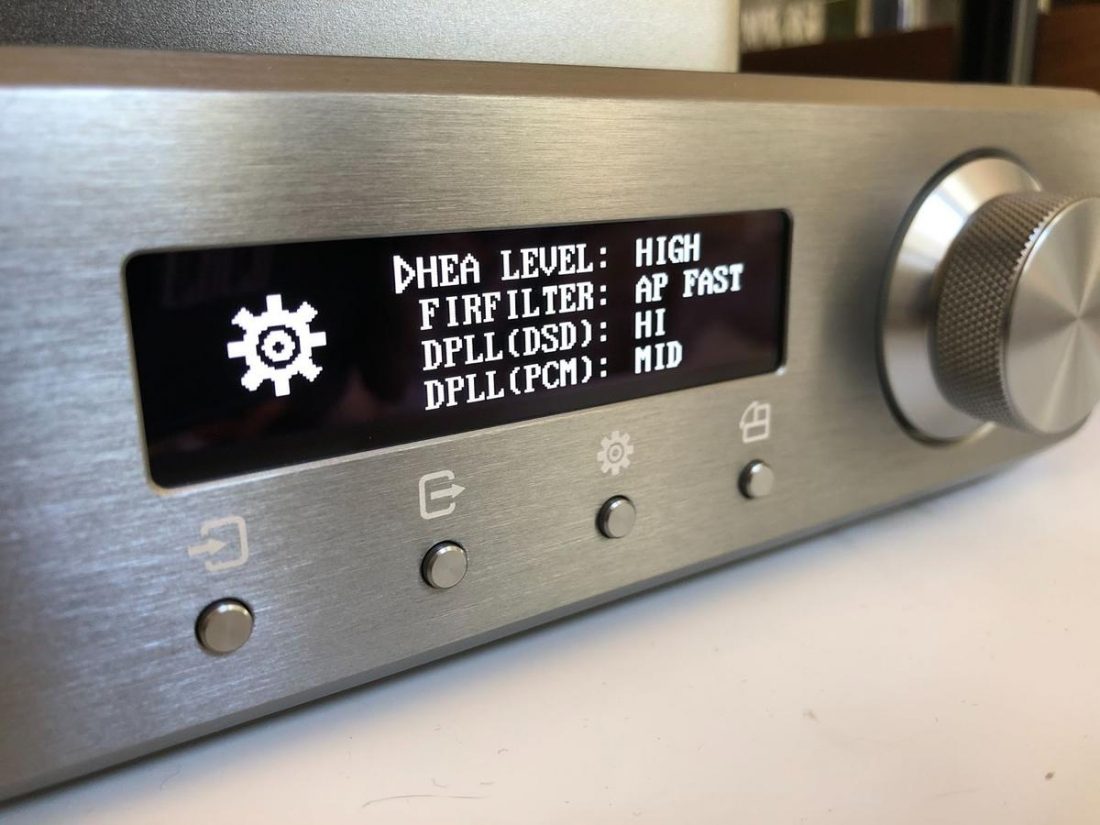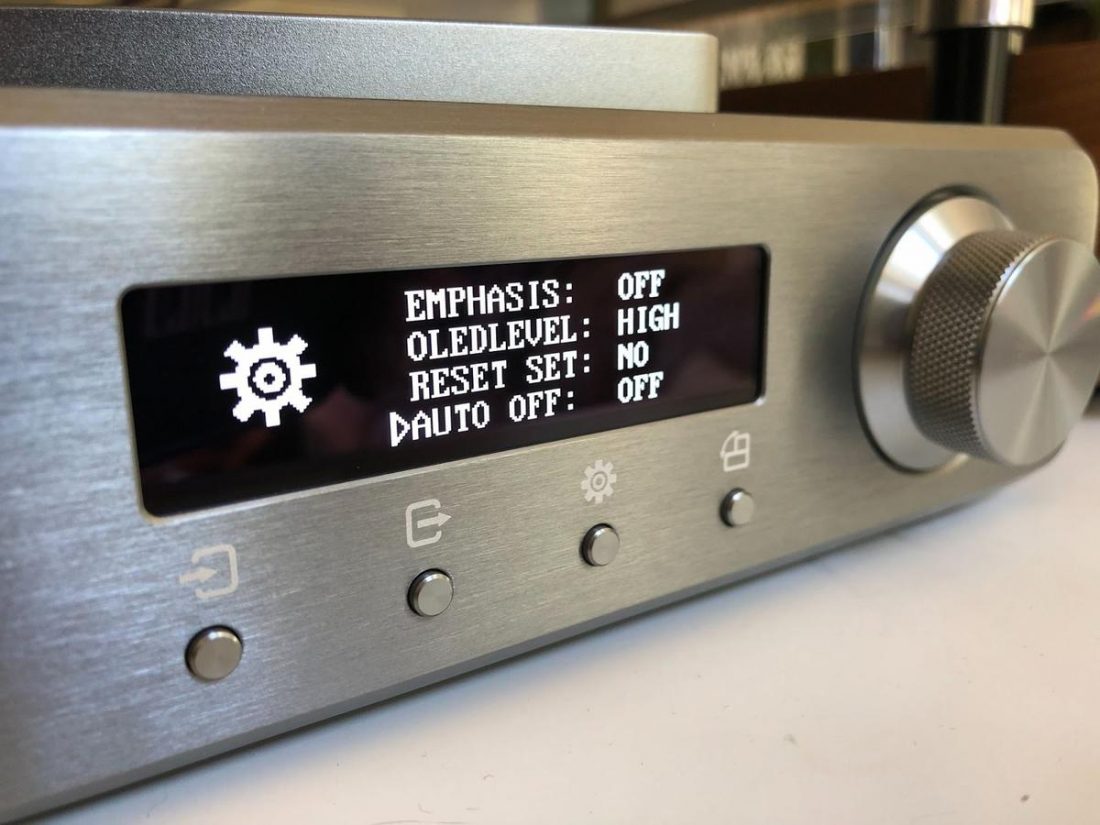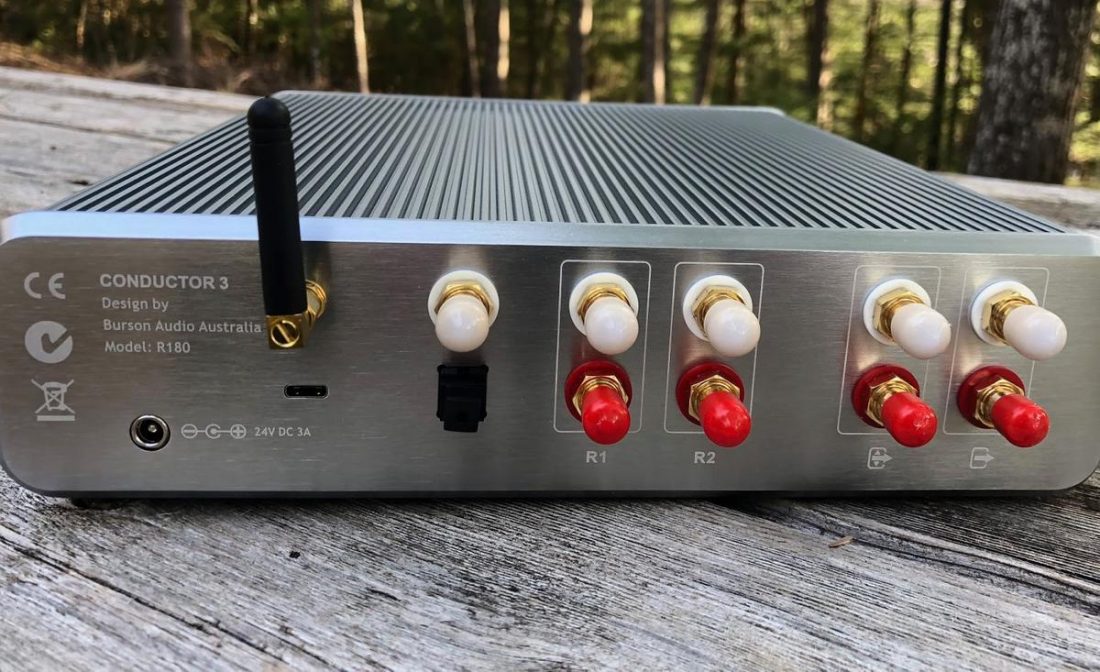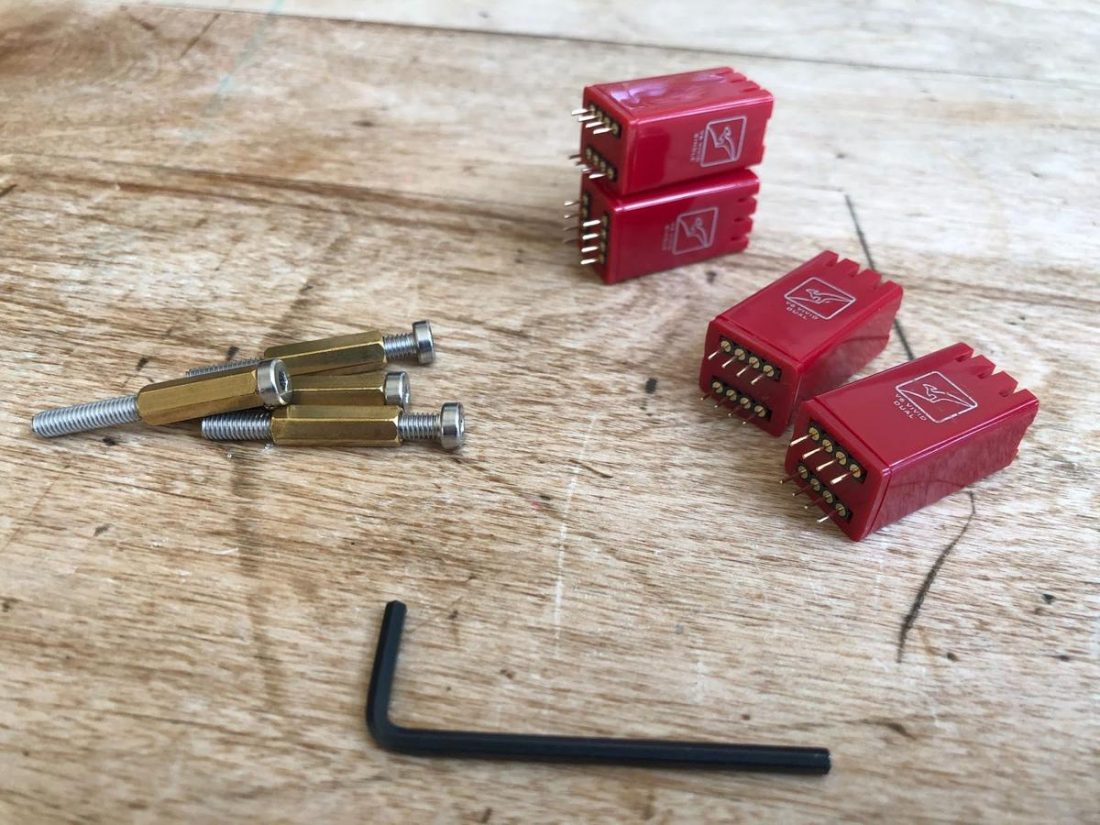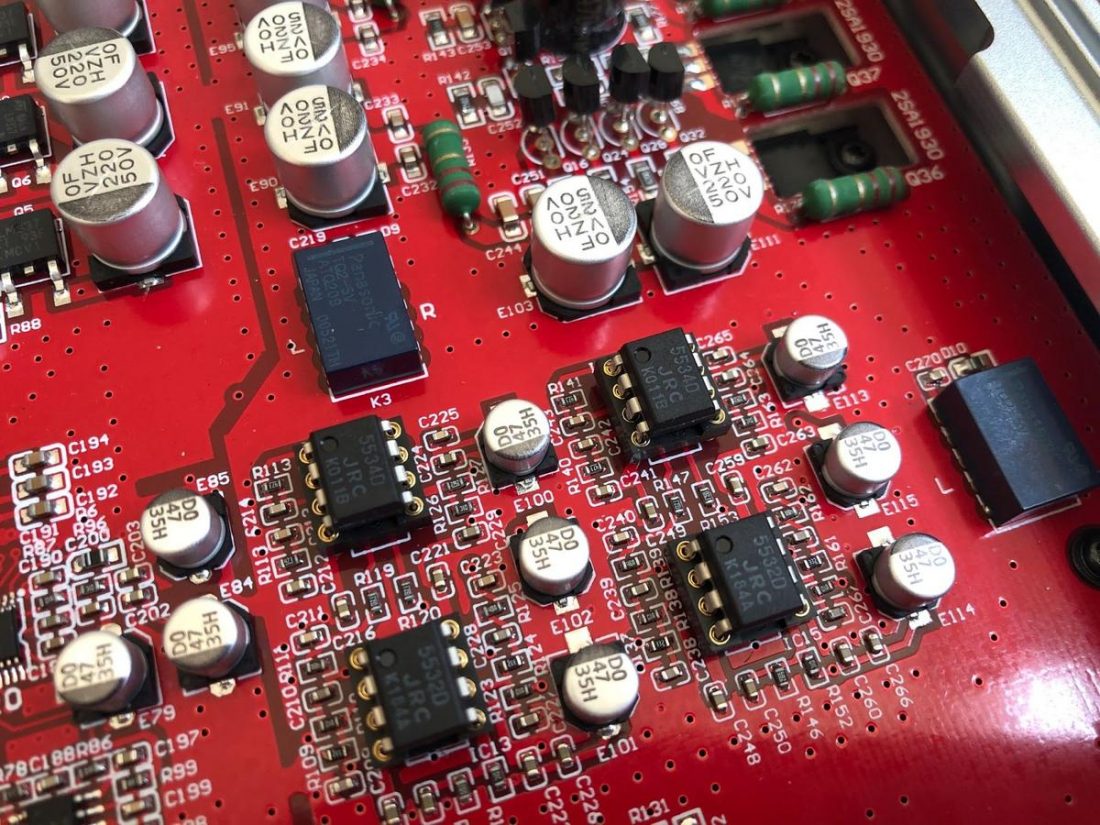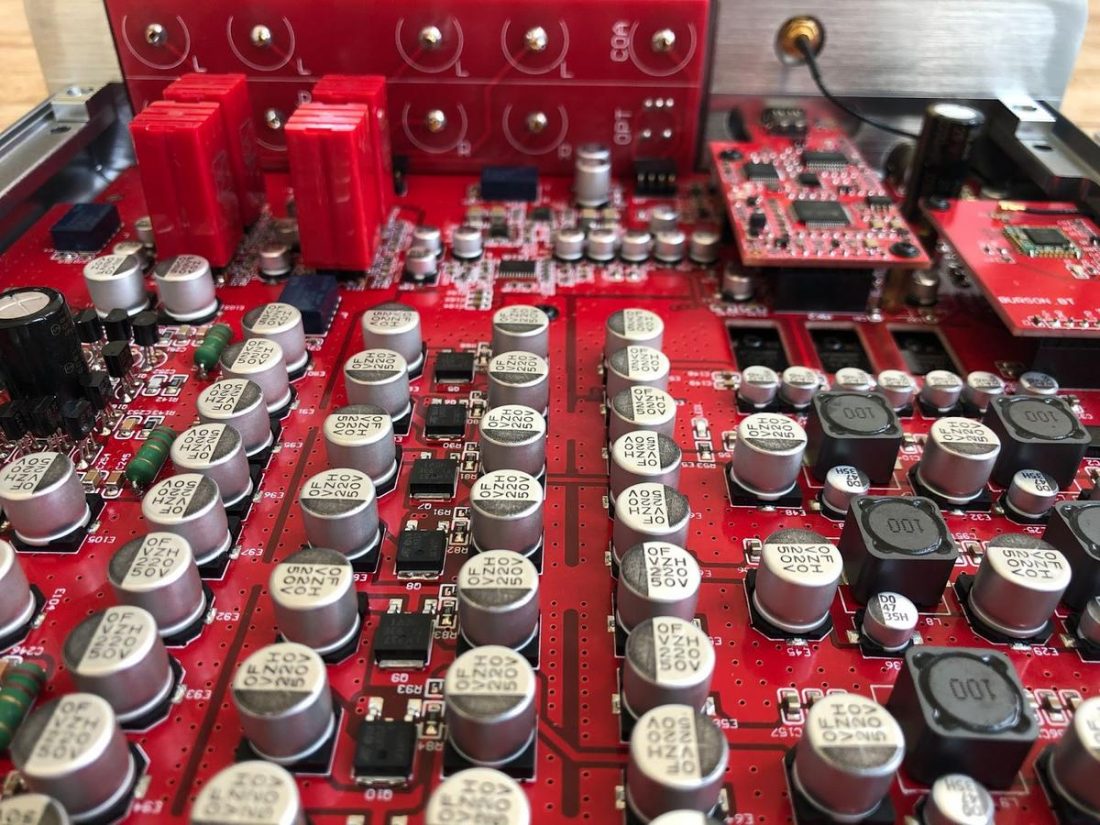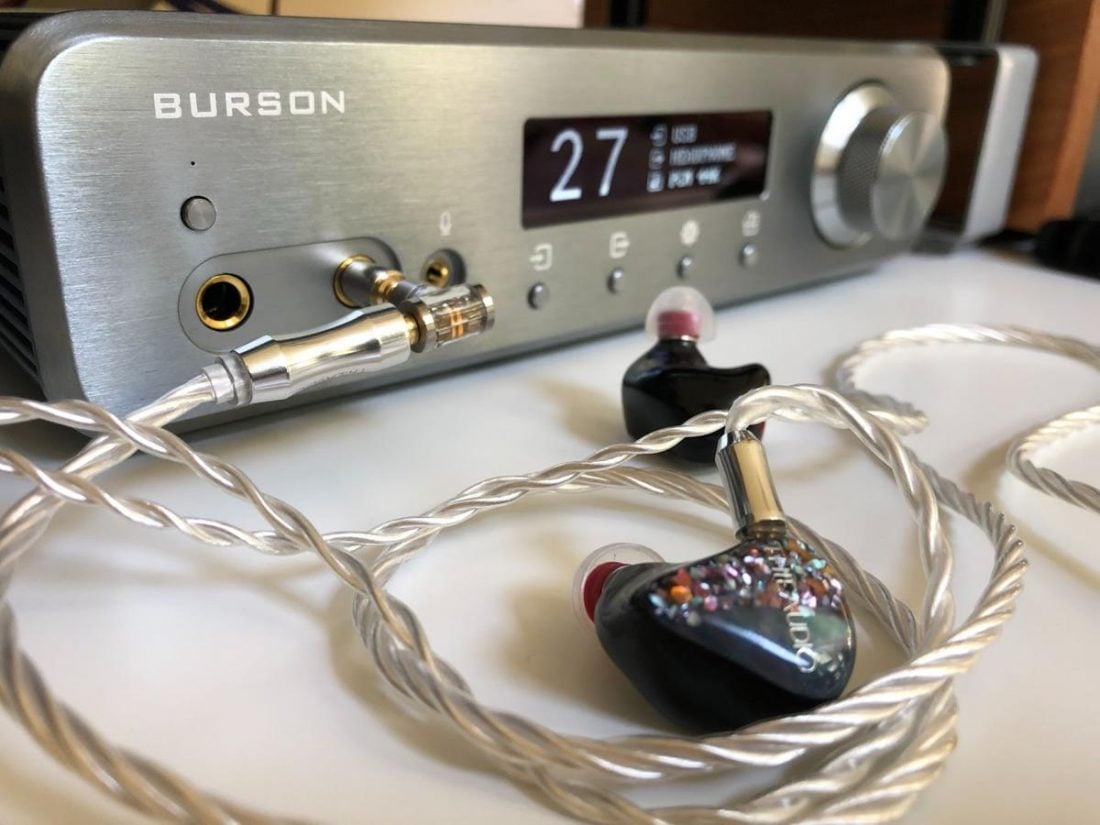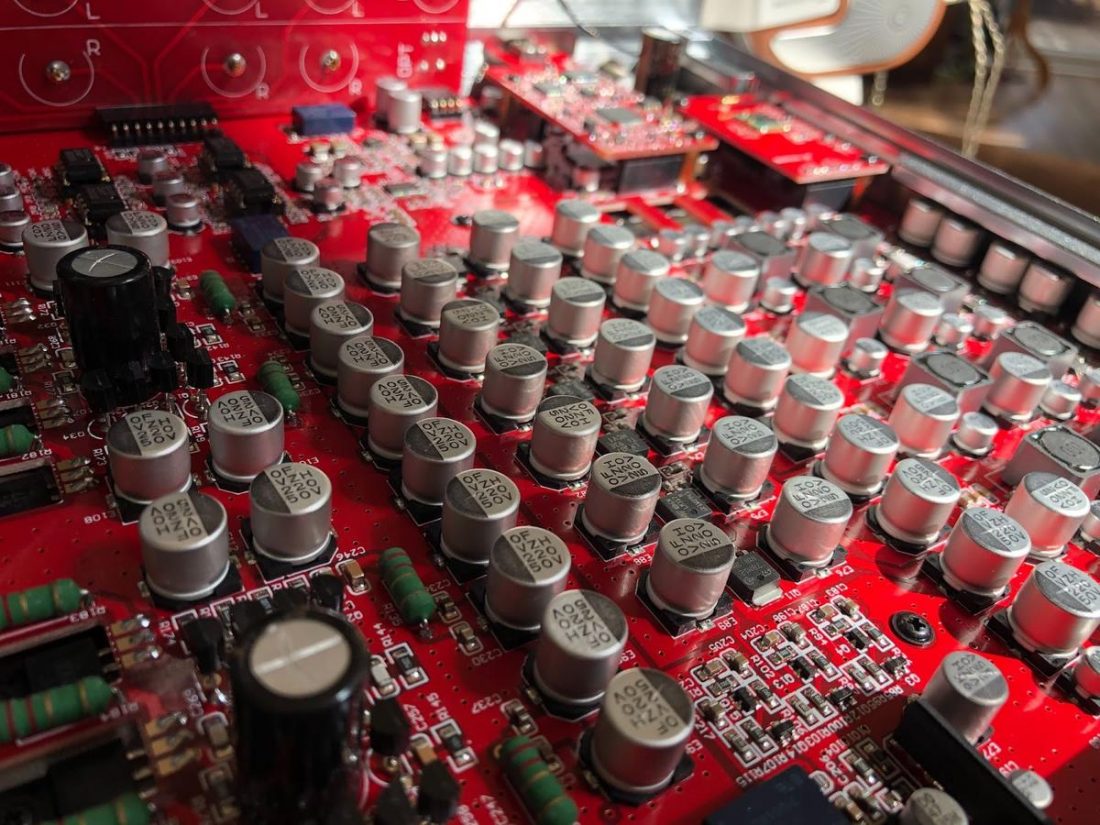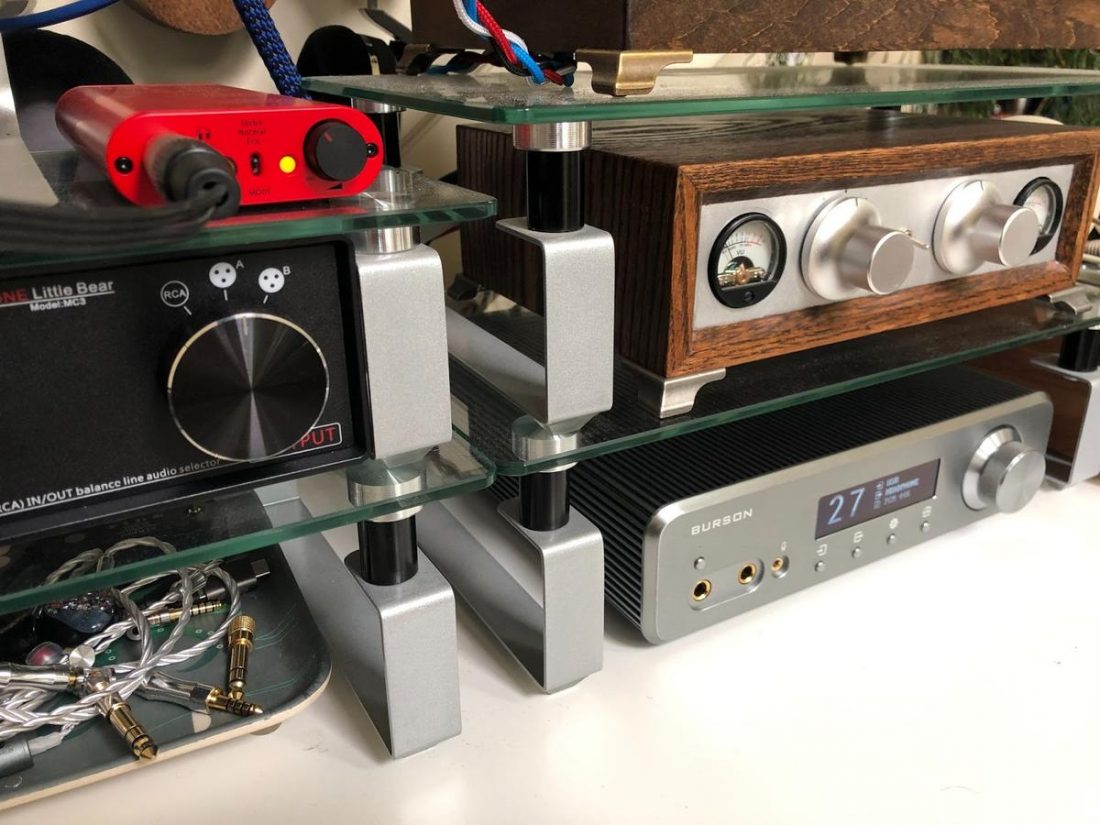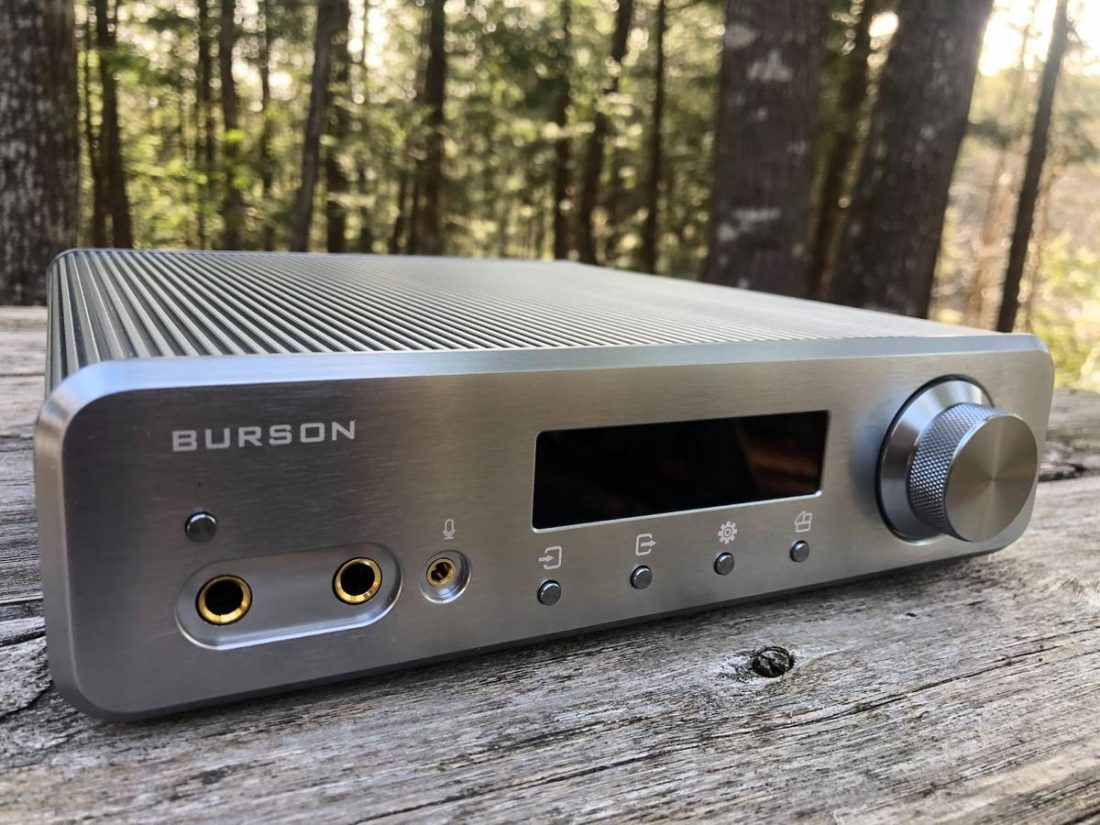If you know headphone audio, you know Burson Audio. And it’s not because they spend all their money on advertising. Burson has made a name for itself by producing high-end desktop DACs and amplifiers, and through an innovative, well-regarded line of discrete opamps. The Conductor Reference line is the flagship offering, featuring both balanced (3X) and single-ended (3R) options (both of which include their best V6 opamps). With a price nearing $2000 USD, the Conductor 3R, which we will be taking a good look at today, is positioned to take on all comers regardless of cost. It’s a behemoth, both in desktop real estate (sized more like a stereo amplifier than a headphone unit) and in power with 7.5W @16Ohms. If you are sick of unending upgradeitis, chasing the latest and newest trend, and always looking for the next best thing to buy, then the Conductor 3R is poised to be your solution. It’s a one-and-done type of device. Buy it knowing that you are getting the best possible performance, format support, and feature-rich futureproofing. Stop looking at and for new gear, and simply be content that you bought the best. Burson has an almost unassailable reputation in the industry. They seemingly can do no wrong. So, it was with high expectations that I approached their TOTL offering. Is the Conductor 3R all I could ever hope for in a desktop DAC/amp? Yes. And no. Would it surprise you to learn that I received a second unit for review because the first one was DOA? It sure did me. Furthermore, might it be a shock that the second unit suffered from its own set of unusual issues? I spent more time opening up and trying repairs (with Burson’s guidance) than with any other test units I’ve received from any manufacturer. So here goes, a review that has to be viewed through the lens of either incredibly unfortunate luck or some manufacturing quality control issues with a company’s TOTL devices. If I was a new purchaser, Burson likely would have lost me as a customer after the replacement unit didn’t work as expected. For the asking price, I expect things to work and work properly.
Company Overview
Founded in 2001 by a small team of audio engineers, Burson Audio is located in Melbourne, Australia. Burson focuses on designing and manufacturing consumer audio equipment, with a design philosophy of ‘less is more.’ For the last decade or so, Burson has vocally opposed using IC opamps in the signal path, and now their line of discrete audio opamps are industry benchmarks. In 2017, Burson developed the award-winning, proprietary Max Current Power Supply (MCPS). Superior to both transformer-based and conventional switching power supply designs, the MCPS is featured in all Burson products.
Technical Specifications
Input impedance: 40 KOhms Frequency response: ± 1 dB 0 – 58Khz THD: <0.0015% Output impedance (Headphone Amp): 0.5 Ohm Output impedance (Pre Out / DAC Out): 1 Ohm / 25 Ohm Inputs: 2 x RCA line-level input, USB, Optical Toslink, Bluetooth 5.0, microphone Weight: app. 5 kg Outputs: 1 x RCA Pre Amp, 1 X Line Level DAC Out, 2 x 6.3mm Headphone Jack Power: [email protected] Ohm, [email protected] Ohm, [email protected] Ohm, [email protected] Ohm, [email protected] Ohm Signal to Noise Ratio: 95db @16 Ohm, [email protected] Ohm, [email protected] Ohm, [email protected] Ohm, [email protected] Ohm
DAC
Channel Separation: 142dB @1KHz, 135dB @20KHz Desktop OS: Windows XP, 7, 8, 10 / Mac OSX THD+N: 0.0005% @1KHz, 0dBFS, iOS, Android (OTG support) COAX & Toslink / SPDIF: up to 24bit 192K PCM Support: PCM 768kHz @ 16, 24 or 32bits Native DSD: Native DSD 64 / 128 / 256 / 512 Bluetooth Input: Bluetooth 5.0 aptX HD (Qualcomm CSR8675) DSD over PCM: DoP64 / DoP128 / DoP256 / Dop512 Dimensions: 255mm x 270mm x 70mm
Packaging
Burson isn’t wasting any time with an assortment of product photos or specifications on the box. You get a big, heavy, white cardboard box with “Burson Audio” and “Lavish Musical Experience” written on the top. Open it up, and you’ll find the 3R ensconced in white foam and a smaller box with all the accessories.
In the box
Conductor 3R Power cable (outside the box in the foam packaging) Power brick (24V, 3A) Remote control USB data cable Four spare IC opamps (2x single JRC 55340, 2x dual JRC 5532D) Hex key wrench (for opening the unit to replace opamps) Power supply certificate of compliance Fuse (only with the second unit)
It’s an interesting assortment of accessories. While the unit itself is undeniably impressive, other than the remote control, I would struggle to describe the accessories as the promised “lavish.” The metal-cased remote is a high-quality match to the 3R unit, though. The inclusion of the extra basic IC opamps (and hex key) is a bit of a puzzle, as they are handy when troubleshooting (as I ended up doing), but I can’t imagine anyone replacing the discrete opamps for everyday use. RCA cables are notably missing, as is an instruction manual.
Trouble in Paradise
Before we go further, and just so we’re all on the same page, I should define the issues that I encountered with the two Conductor 3R units.
Unit 1 – internal revision 2.2
MacBook and Roon software recognize the Burson DAC as connected. Selecting the headphone output on the 3R, there is no sound output from either 6.25mm headphone socket. Tested the internal DAC and also from the RCA1 input with an external DAC. With Bluetooth, the source shows the DAC as connected, but no sound comes from the 3R. Confirmed that the 3R is not muted and turned up the volume. Only silence from the headphone jack. Selecting the DAC output to RCA, there is sound only from the right channel. With assistance from Burson, replaced internal discrete opamps with spare IC opamps. No change.
Unit 2 – internal revision 2.5
When pressing the power button, the unit usually doesn’t power on, and the power LED flickers dimly for a couple of seconds. Typically, after 2-3 attempts, it will power on, and the screen will light up. This occurs regardless of how long or firmly the power button is pressed (either momentarily or for a full 1-2 seconds). It powers off normally using the button. The RCA inputs 1 and 2 are labeled XLR on screen. On the first unit, the screen displayed RCA as expected. With Burson’s assistance, I disassembled and removed the front panel, cleaned and applied Deoxit to the connector pins, and reassembled. No change. Upon Burson’s suggestion, I tried swapping the front panel from the first unit in place of the second. Upon plug-in, the second unit immediately powered on but was entirely unresponsive. Replacing the original panel returned it into the ‘flickering power LED and intermittent power on’ status.
Despite the second unit’s power issues and improperly labeled on-screen inputs, it appears to function as expected once I get it to turn on. Charles and Bhav at Burson were fantastic to deal with and very apologetic throughout the experience. So now you understand my disappointment and concerns with the Conductor 3R. Two different board revisions and a variety of issues ranging from unusable to annoying. Am I just super unlucky, or is there more going on? Food for thought.
Design
Burson calls their case design ‘The Cool Case.’ It’s heavyweight aluminum, electroplated to look like brushed steel. Since it’s held together with only four hex-head screws, the case is straightforward to take apart if desired. The top and sides are uniquely finned and clearly designed to function as a heatsink (Burson claims it’s 300% more effective at dissipating heat than previous Conductor designs). The Cool Case is visually clean, impressive, and quietly screams high-end. The front panel is cleanly adorned with dual 6.35mm headphone outputs, a 3.5mm microphone input, a multifunction monochrome display with four small buttons below it (Input, Output, Settings, and Screen Rotation), and a lovely heavy-weight, knurled aluminum knob on the right. The knob controls a stepped attenuator to set the volume or change between menu options. Press to select menu options or to mute the volume. The Conductor 3R is physically larger than most headphone amplifiers and as a result, takes up a lot of desktop space. To help alleviate size concerns, the unit may be positioned vertically, with the volume knob at the top. The screen rotates to match this orientation with the press of the physical button. Unfortunately, unlike the similarly featured iFi NEO iDSD, there is no stand included to support the unit in vertical orientation. The tiny remote only has four buttons: mute, input, volume up, and volume down. It’s easier to just toggle through inputs using the remote than through the more cumbersome menu and interface on the 3R itself. Frankly, the interface is just ok from a user’s point of view, and the lack of a paper manual doesn’t help the situation. The menu labels could certainly be more intuitive. On a positive note, the white-on-black OLED screen is very easy to read, and during use, the volume, input, output, and format are welcome information to be displayed. The rear output of the 3R is a relatively simple but well-appointed affair with 2 RCA analog inputs, digital optical, coaxial, and USB-C inputs, fixed and variable RCA analog outputs, a small Bluetooth antenna, and a power socket. All you need on a device like this.
Internals
The Conductor 3R features two ESS Sabre ES9038Q2M DAC chips supporting DSD512 and 32bit/768kHz playback. Somewhat puzzlingly, the 9038Q2M is the mobile version of the Sabre chipset, rather than the flagship, 8-channel, ES9038Pro chip (which may be found in far less expensive devices such as the SMSL SU-9 DAC). Of course, properly implemented, the M version chips can sound superior to lesser implementations of the Pro chipset, but I find it an odd choice in a top-tier desktop device.
Discrete opamps
As mentioned, Burson includes four of their V6 discrete opamps inside the Conductor 3R. Burson is adamant that an Integrated Operational Amplifier (IC opamp) is audibly inferior to a discrete version designed specifically for high-end audio.
Advantages of Burson discrete opamps
Custom circuitry depending on application Significantly reduces component count to better preserve signal integrity Contains top-quality audio-grade components 1%-matched metal-film resistors and silver mica capacitors Extremely temperature stable Each transistor is chemically optimized for its application: NPN or PNP Each transistor tested and matched before hand-soldering onto the PCB Optimized for breakdown voltage and performance
MCPS
The Conductor 3R also incorporates Burson’s proprietary Max Current Power Supply (MCPS). In an IC opamp the conductor layer that connects all the parts is formed by a layer of aluminium vapour that is thinner than the water vapour left on foggy windscreen. This poor conductor is the silent killer to musical texture. The close proximity of components also poses a problem for audio signals, where that delicate signal that music lovers pursue, will be masked by EMI noise. In the end, the consumer is getting an opamp that is built with a bunch of second grade parts that is unable to yield the best results, connected via a thin layer of aluminium foil. An IC opamp is nothing more than a cost cutting substitute in audio application which we hate with a passion!” – Burson Traditional power supply designs have two fundamental shortcomings: impedance and noise. The Burson Max Current Power Supply (MCPS) resolves the problem of power supply impedance “…by removing the power transformer altogether. It uses transistors and as such it has less than 1 ohm of resistance. It means delivering electric current instantly to meet any demand.” By increasing the working frequency of the incoming power to 170khz, and by converting the sine-wave into a more efficient square-wave, any power supply noise is moved well above the human hearing threshold of 20khz. The MCPS charges capacitors much faster and therefore does not require a large capacitor bank.
Amplifier
To position itself as an end-game, all-in-one device, the 3R features VERY robust amplification. In fact, you’ll be hard-pressed to find another unit with this sort of single-ended Class A power. With 7.5W @16Ohms ([email protected] 32Ohms, [email protected]) the 3R is an absolute beast of a headphone amp. Plenty of power for your full-sized, high-impedance, and low-sensitivity cans. Notoriously hard-to-drive planars like the HiFiMan HE-6 have finally met their match. But as with all things, there must be balance. I expected that balance would come at the expense of compatibility with extremely efficient and sensitive headphones and IEMs. Often powerful headphone amplifiers struggle to provide a usable volume range for IEMs or have a noticeable noise floor with efficient headphones. This was partially the case when I paired the 3R with the Thieaudio Monarch IEMs. Somewhat unexpectedly (but welcomed), with the 3R in low gain (HEA LEVEL) mode, the usable volume range is well into the 20s before it approaches too loud for everyday listening. The big knob and 100-point volume scale allow for terrific fine-tuning. Win! However, all is not perfect. There is a low-level but noticeable buzz/hum noise audible in the IEMs, which changes depending on the display. I found the ultimate test was to mute the unit, causing the large volume number on the display to flash. Every time it flashes off, the noise disappears, only to start again when the volume level lights up. With trial and error, I discovered that by reducing the display brightness from High to Low the noise was eliminated. A workable but not ideal solution. Additionally, when the 3R is paired with efficient full-sized headphones (such as the Meze 99 Classics) or most IEMs, a low-level audible hiss is noticeable when the unit is powered on (even with volume at 00). It’s an easily discernible difference when powering the unit on and off. The hiss isn’t loud enough to be noticed when music is playing. Also, when wearing IEMs or headphones, there is a brief but almost painfully loud snap/click/pop noise when powering the unit on.
Burson Conductor 3 Reference Sound
Due to the elevated noise floor, the 3R is better suited to more difficult to drive, full-sized cans, which is a shame, as the 3R sounds very, very good. It’s a case of ‘so-very-close-to-perfect.’ If you have the proper headphones (such as the Audeze LCD2) to pair or can overlook the unwanted noise problems, the resulting sound is very good indeed. Overall fidelity is excellent. The abundant power seems limitless but well within control. Dynamics are as vast and full-throttled as any I’ve heard. The sound is spacious and large, far from the closed-in or boxy presentation found in some lower-end gear. The Conductor 3R’s reproduction seems very true to the source, whether through its internal DAC or the analog inputs (the Bluetooth also works very well but is a touch less clear and detailed). This isn’t to say the 3R’s sound is entirely uncolored and flat, as the overall impression is one of ‘oomph’ with a touch of warmth, but not so much that any sort of detail or resolution is noticeably lost. While ESS Sabre chipset based DACs lean towards a brighter, more clinical, and sterile type of sound, the implementation within the 3R tames this tendency. The overall impression is of very natural audio reproduction. Feeding the DAC to external amplifiers such as the Bottlehead Crack or Hagerman Tuba yields a fantastic listening experience, with the DAC performing as I expect, taking a back seat to the unique sound characteristics of the amplifiers and paired headphones. The DAC seems transparent and detailed and is a very fine-sounding source regardless of the amplifier used.
Comparisons
My most recent review was of the portable powerhouse iFi iDSD Diablo DAC/amp. The Diablo is a far smaller unit than the Conductor 3R, but features a similar maximum output power of 5W @32Ohms, albeit in balanced mode (half that in single-ended). As far as features go, the Diablo bests the 3R in only a few categories: balanced input and output, three levels of gain (vs High/Low), better included accessories, and (of course) portability. The 3R has multiple analog inputs, SE output, Bluetooth, various filter and playback options, a screen, and remote control. It boasts far more user features, but it’s also about twice as expensive as the Diablo. At first glance, the Diablo didn’t make sense to me. I wondered why anyone would require that sort of power in a portable device. It lacks features found in lesser iFi models, with a stripped-out race car approach to the highest fidelity audio reproduction. However, it’s the quality of reproduction that firmly won me over. In fact, other than the Eco (low) gain setting not being quite low enough for sensitive IEMs to provide a usable volume range, the Diablo has none of the drawbacks I experienced with the 3R. First off, the one and only Diablo review unit functioned perfectly, right out of the box. It also has no audible noise floor hiss, far less audible clicking when powering on, and no other unwanted noise oddities (like the screen brightness hum with the 3R). It’s also easier to fit on a busy desk. That would all hold less weight if the Conductor was far and away the better-sounding choice. It just isn’t. The Diablo does sound great, with a very similar impression of effortless power and the dynamics found in the 3R. It’s equally as spacious and natural sounding. They don’t sound exactly the same, but it’s much more a fine-grained case of subjective preference than one of superiority. An undocumented but cool feature of the Roon playback software is that if you have 2 DACs plugged into a single source (in my case an old Macbook Air and 4-port USB hub), you can switch back and forth between the DACs without interrupting playback. This allows for easy song synchronization and volume normalization between both units. Thus, you can quickly swap a pair of headphones between the playback devices by unplugging and plugging into the other. It’s a very painless way to compare two DAC/amps. And that’s what I did between the Diablo and the Conductor 3R. At length. If the Conductor is approaching the pinnacle of audio reproduction, well then, the Diablo is right there beside it, headed in the same direction at half the cost. If anything, the experience of simultaneously using the Diablo and the 3R had the unexpected result of making me appreciate the Diablo all the more. And so it seems, we must give the Devil its due.
Where to Buy
Conclusion
The internet seems full of gushing reviews of the Burson Audio Conductor 3 Reference. It’s been around for a while, and I’ve been exposed to many testimonials about its outstanding build quality and its famed sound reproduction. When the first unit was DOA, it was a disappointing surprise, but hey, these things happen to all manufacturers. My contacts at Burson were terrific to deal with, and after walking me through some troubleshooting, they were quick to get another review unit in my hands. I was all set to achieve audio nirvana. To finally be exposed to the very best that the headphone audio world has to offer. And then the second unit showed up with two distinctly different issues. Did these problems make me take a harder look at the 3R overall? To scrutinize it unfairly? Maybe, but I don’t think so. The power and screen label issues seem to be manufacturing or quality control problems. Perhaps very unluckily, I just ran into a couple of units with that sort of defect. However, the audible noise floor hiss, power-on pop, and unwanted noise caused by the screen brightness are problems in the design, rather than quality control. Even if the unit was working correctly, these issues would (I assume) remain. And I don’t think that’s acceptable for a TOTL product looking to replace all the other headphone sources on your desk. Burson positions the 3R as a one-and-done type of device. Stop your searching; you’ve found the ultimate solution for all your headphone needs. But to live up to this promise, the Conductor needs to be audibly perfect in design, and it’s just not. Yes, the problems are fairly minor depending on your particular uses, but nonetheless, they remain. If you can overlook the limitations or only have more difficult headphones to drive, the 3R sounds amazing. Powerful, dynamic, spacious, and natural. But it’s not the only option in town. And I’ve recently met a devilishly handsome, portable device that does not have the 3R’s design compromises. It has few limitations and provides a similar audible wow factor to the bigger, costlier unit. At the risk of offending the throngs of effusive supporters, the Conductor 3 Reference is good but simply not as good as I expected.

